Learn how to make elderberry syrup with this easy method using dried elderberries and make several batches for the price of one bottle at the store. Elderberry syrup has immune-boosting benefits, and it works!
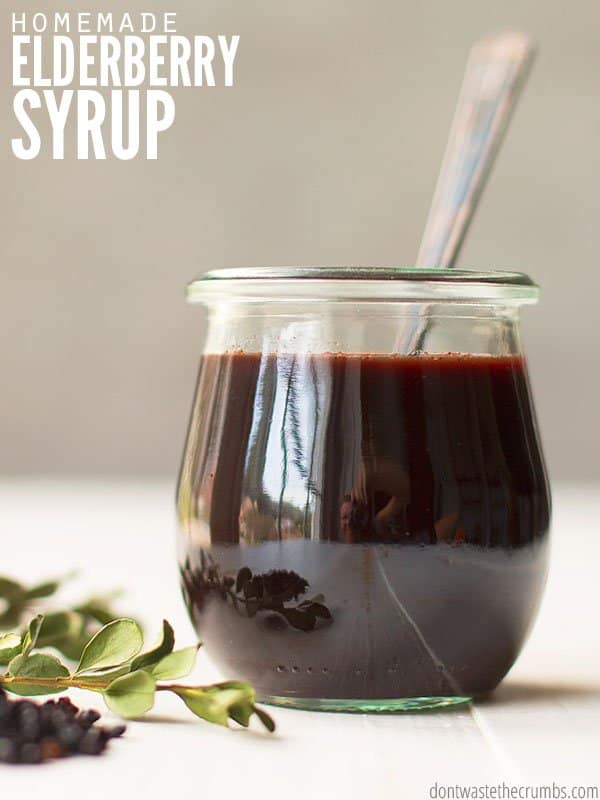
Cold and flu season technically runs from November to February, but if you or anyone in your family interact with ANYONE else, chances are you get sick year-round.
That’s why I keep charcoal gummies in my freezer. If someone gets the stomach virus, I want to nip it in the bud ASAP and prevent the rest of us from catching it.
It’s also why I like to make two batches of elderberry syrup as the cold and flu season begins. I admit to being skeptical at first, but let me tell you how awesome homemade elderberry syrup is (and how easy it is to make!).
ELDERBERRY SYRUP BENEFITS
- This study concluded that the effects of elderberry flavonoids were comparable to the flu medicine Tamiflu!
- Elderberry is found over the counter in common cold and flu brands like Zarbees, Sambucol, and Sambucus, but for the price of JUST ONE of those medicines, you can make several batches of homemade elderberry syrup.
- Considering this actually WORKS for us and it’s significantly cheaper (and super easy to make), it’s something I’m going to be keeping on hand throughout the year.
- With a simple ingredients list, you get the benefits of elderberry syrup without any unnecessary additives or colorings.
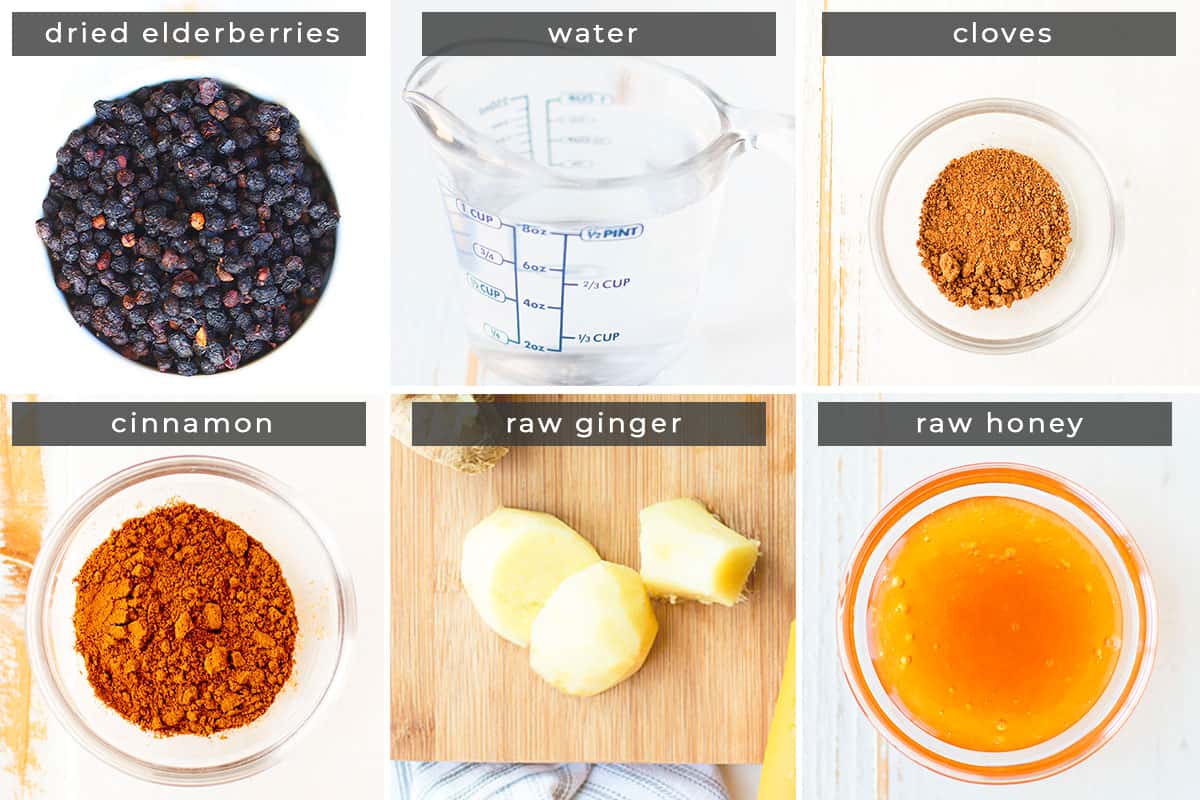
ELDERBERRY SYRUP INGREDIENTS AND SUPPLIES
- dried elderberries (also called Sambucus nigra) (these are the ones I use)
- water
- ground cinnamon (or cinnamon sticks), optional
- ground clove (or whole cloves), optional
- fresh ginger, finely grated, optional
- raw honey (or to taste)
- fine mesh strainer
- glass bowl
- wooden spoon
- quart jar with a lid for storage
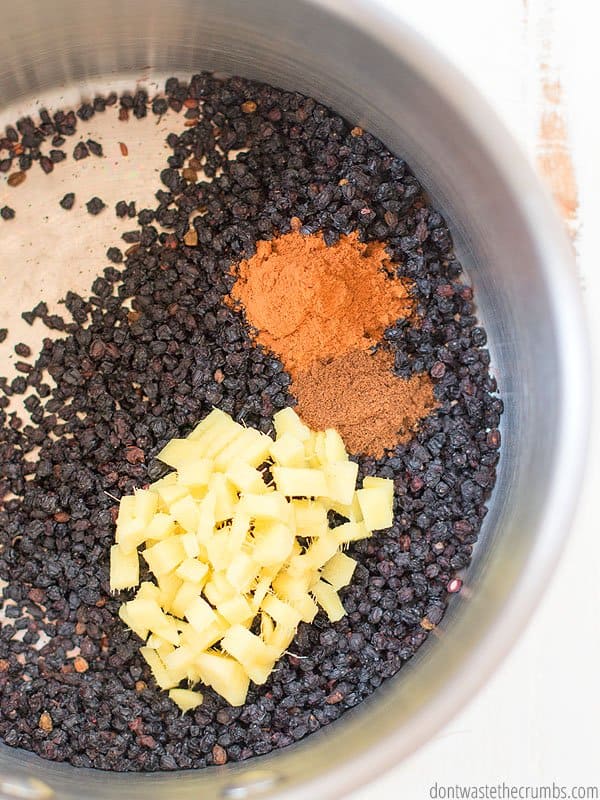
HOW TO MAKE ELDERBERRY SYRUP
Step 1: Combine dried elderberries, water, cinnamon, clove, and ginger in a medium pot and bring just to a boil. Cook until the liquid has reduced to almost half, about 45 minutes. (Mine took exactly 45 minutes both times, but you can set a timer for 30 minutes and check if you don’t want to forget about this being on the stove!)
Step 2: Place a fine-mesh strainer (I have this set) over a big bowl (I have this set) and pour the liquid through the strainer. Mash the solids against the strainer, doing your best to get as much of the fruit through the strainer as possible. Take your time here so you’re not wasting precious elderberries! You can also squeeze it out through a cheesecloth, just be cautious if the mixture is still hot.
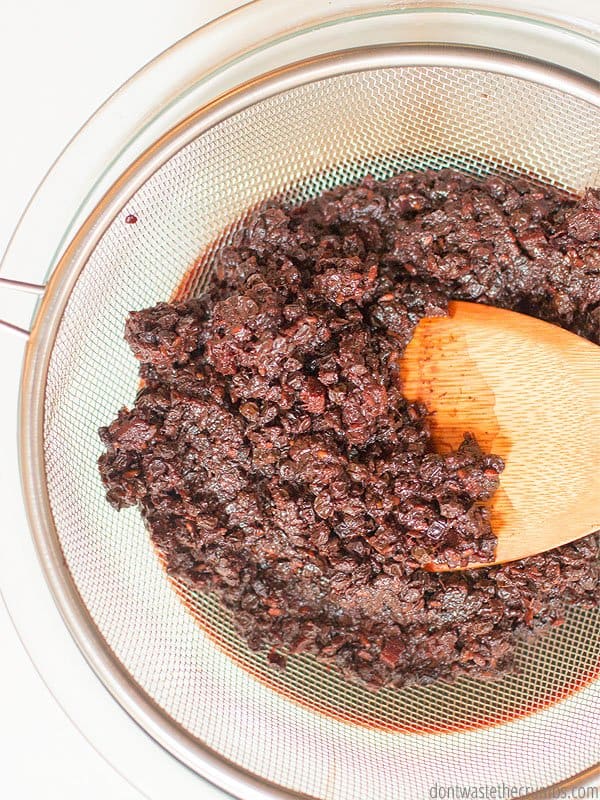
Step 3: When you’re left with mostly seeds, use the elderberry mash for kombucha OR compost it (here’s an easy way to get started with composting). Let the syrup cool to room temperature.
Step 4: When the syrup is cool, pour it into a quart jar. Add the honey and stir well. Store in the fridge!
HOMEMADE ELDERBERRY SYRUP DOS AND DON’TS
DON’T GO FORAGING FOR ELDERBERRIES (AND ESPECIALLY DON’T EAT THEM RAW)
There are only a few elderberry plants that are edible in general, and the leaves and stems from nearly all elderberry plants can be dangerous.
If you use fresh berries for this recipe, I recommend finding a reputable local source. Otherwise, I recommend these dried elderberries online. (This is a reputable brand and the best deal I’ve found!)
Note: Prices on Amazon change all the time. If you’re buying elderberries during cold and flu season, the price will be higher than in the offseason.
RAW HONEY IS NOT FOR INFANTS UNDER 12 MONTHS OLD
Raw local honey has exceptional health benefits, including managing seasonal allergies and boosting the immune system. That’s why I’ve included it in my elderberry syrup recipe. Well, that and elderberries are quite tart, and medicine won’t work unless you actually take it! The honey makes it a little more palatable, especially for kids.
If you’re making this for your really little ones, you can use a different sweetener such as maple syrup OR put the elderberry juice syrup back on the stove after it’s strained and add the honey, simmering for about 5-10 minutes to pasteurize it.
I found local raw honey at a health store in my town. This raw honey is good too, and I’ve seen it in my local Walmart. This honey is from Brazil though, so chances are it won’t offer allergy relief (unless you live in Brazil!).
GINGER, CINNAMON, AND CLOVE ARE OPTIONAL
I included all of these in my batches because I think they add a layer of yumminess to the elderberry syrup. However, the syrup will work just as well and taste just fine if you omit one or all of these.
You probably won’t find a knob of ginger small enough for what you need for this recipe, so I recommend buying a 4″ piece and grating the whole thing. Measure what you need for this recipe, and then freeze the rest for a future batch!
USE A STRAINER OR A NUT MILK BAG. DON’T USE A BLENDER
Numerous sites discuss the dangers of eating the seeds of elderberries. Because a blender will pulverize the berry AND the internal seed (especially if you have a Blendtec or Vitamix), I don’t recommend using it to make elderberry syrup.
Instead, smash the berries with the back of a wooden spoon through a fine mesh strainer OR place them in a nut milk bag and squeeze like crazy. Both of these methods will ensure no seeds make it into the final syrup.
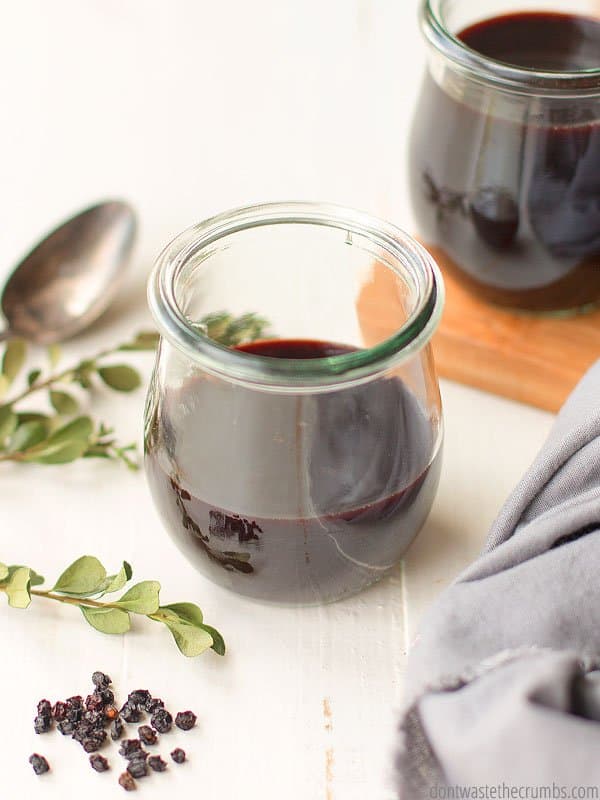
SAVE THE ELDERBERRY MASH FOR FLAVORING KOMBUCHA
Instead of throwing away the elderberry mash (the solids that are left after you’ve smashed the berries through the strainer), use it for flavoring your kombucha! You’ll get a double whammy of immune-boosting AND gut boosting benefits of elderberry syrup and get the most out of the investment in elderberries.
To do this, place 1-2 tablespoons of elderberry mash into a tea bag. I have cotton tea bags like these and was able to put 2 tablespoons of mash into each of my 4 tea bags.
To brew, use 1 tea bag per 1 gallon of kombucha. If you don’t need all the elderberry mash right away, there are three ways to save them for later:
- Fill up the tea bags and place them directly in the freezer. You’ll simply pull a tea bag from the freezer and put it in the water when you’re ready to make kombucha.
- Freeze the elderberry mash in 1 tablespoon portions, in an ice cube tray.
- Use a cookie scoop to portion the mash onto a cookie sheet lined with parchment paper. (This is the same method I use to freeze tomato paste.)
Need help making kombucha? Here’s my original kombucha tutorial and recipe. To use the elderberry mash, follow the directions for rosehip and hibiscus kombucha, substituting the mash for the herbs in step 1.
It may not seem like much, but using up every bit of food that comes in the kitchen is a great way to save money. I believe so much in avoiding food waste that I dedicated an entire lesson to it in Grocery Budget Bootcamp! Every little bit adds up! Enrollment is currently closed, but you can join my FREE 5-day Crush Inflation Challenge and start saving money on groceries tomorrow!
ELDERBERRY SYRUP DOSAGE
If my family is not sick, I use a standard dosage of ½ teaspoon daily for kids and ½ tablespoon daily for adults.
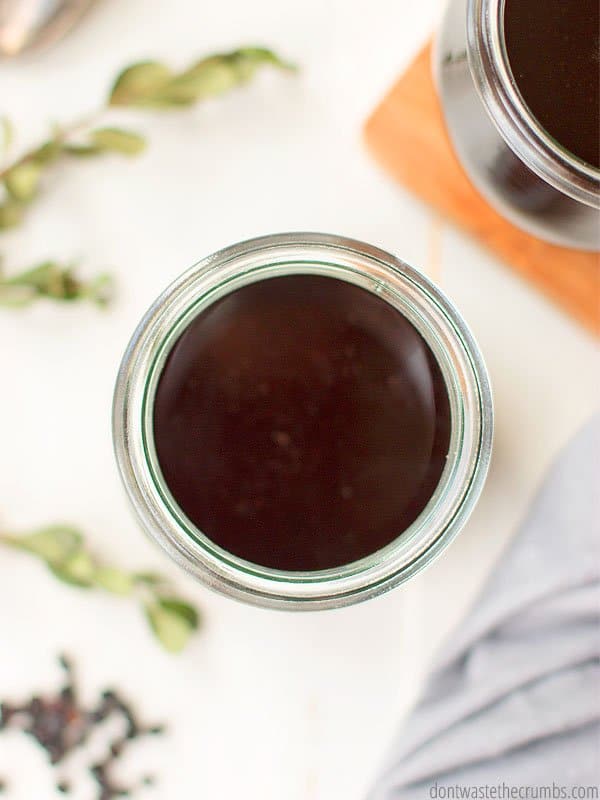
ELDERBERRY SYRUP RECIPE FAQS
Do you have to boil elderberries?
Yes! As noted above, do not forage for elderberries, and especially do not eat them raw.
How long is homemade elderberry syrup good for?
When prepared properly and stored in a glass container in the refrigerator, homemade elderberry syrup should be good for up to 3 months.
What does elderberry syrup do for you?
Elderberries are packed with antioxidants and vitamins. Plus it can help boost your immune system. You may find that you don’t get sick as often, or that your illness is less severe.
Is it safe to make elderberry syrup?
The tutorial in this post gives you step-by-step instructions for making elderberry syrup. It’s best to read the dos and don’ts first, and then follow the instructions to make your own.
Can you take elderberry syrup daily?
As noted in this post, my family and I take it leading up to cold and flu season and during times when illness is more prevalent. See my post for the dosages that we take.
MORE HOME REMEDIES
Looking for more home remedies? Here are a few other simple tutorials I think you’ll find helpful!
- Elderberry Gummies (if your family prefers gummies instead of syrup)
- Charcoal Gummies (just 2 ingredients, for the stomach flu/virus/bug)
- Magnesium Lotion (for stress, anxiety, and sleep)
- Magnesium Oil Spray (just 2 ingredients, same benefits as magnesium lotion, but a bit easier to make for first-timers)
*These statements have not been evaluated by the Food and Drug Administration. These products are not intended to diagnose, treat, cure, or prevent any disease. We recommend that you consult with a qualified healthcare practitioner before using herbal products, particularly if you are pregnant, nursing, or on any medications. For educational purposes only.
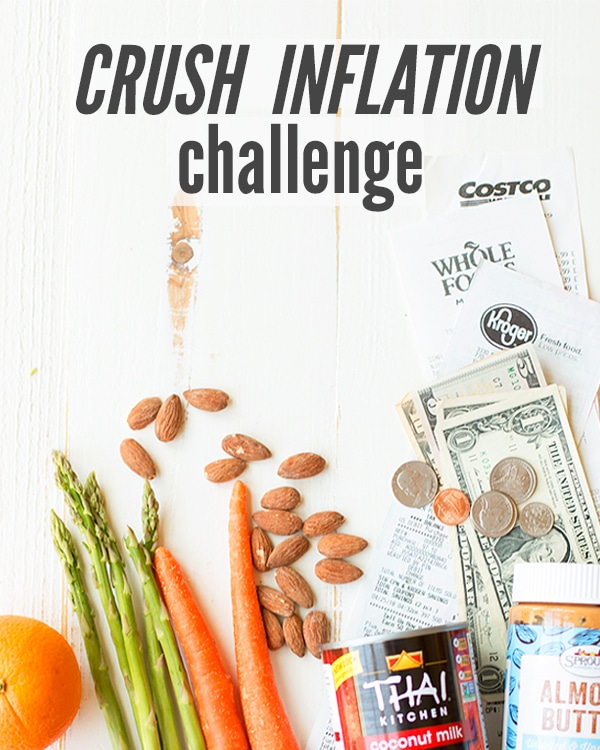
Crush Inflation Challenge!
Sign up for my FREE Crush Inflation Challenge and learn simple strategies to save money, even with rising food costs!How to Make Elderberry Syrup
Learn how to make elderberry syrup with this easy method using dried elderberries and make several batches for the price of one bottle at the store. Elderberry syrup has immune-boosting benefits, and it works!
- Prep Time: 10 minutes
- Cook Time: 45 minutes
- Total Time: 55 minutes
- Yield: 2 cups 1x
- Category: Home Remedies
- Method: Stove top
- Cuisine: American
Ingredients
- ⅔ cup dried elderberries (also called Sambucus nigra) (these are the ones I use)
- 3 ½ cups water
- 1 tsp ground cinnamon (or cinnamon sticks) (optional)
- ½ tsp ground clove (optional)
- 2 Tbsp fresh ginger, finely grated (optional)
- ½ cup raw honey (or to taste)
Supplies
- Fine mesh strainer
- Glass bowl
- Wooden spoon
- Quart jar with a lid for storage
Instructions
- Combine dried elderberries, water, cinnamon, clove, and ginger in a medium pot and bring just to a boil. Cook until the liquid has reduced to almost half, about 45 minutes. (Mine took exactly 45 minutes both times, but you can set a timer for 30 minutes and check if you don’t want to forget about this being on the stove!)
- Place a fine-mesh strainer (I have this set) over a big bowl (I have this set) and pour the liquid through the strainer. Mash the solids against the strainer, doing your best to get as much of the fruit through the strainer as possible. Take your time here so you’re not wasting precious elderberries!
- When you’re left with mostly seeds, use the elderberry mash for kombucha OR compost it (here’s an easy way to get started with composting). Let the syrup cool to room temperature.
- When the syrup is cool, pour it into a quart jar. Add the honey and stir well. Store in the fridge!
Notes
- When prepared properly and stored in a glass container in the fridge, homemade elderberry syrup should be good for 3 months.
Nutrition
- Serving Size: 1 tsp
- Calories: 15
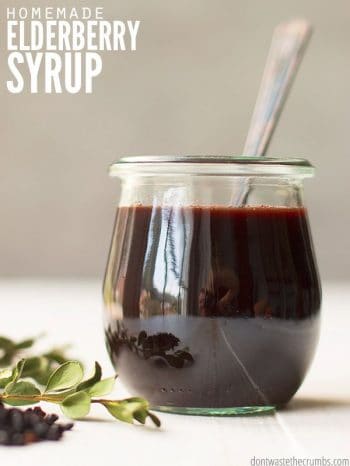
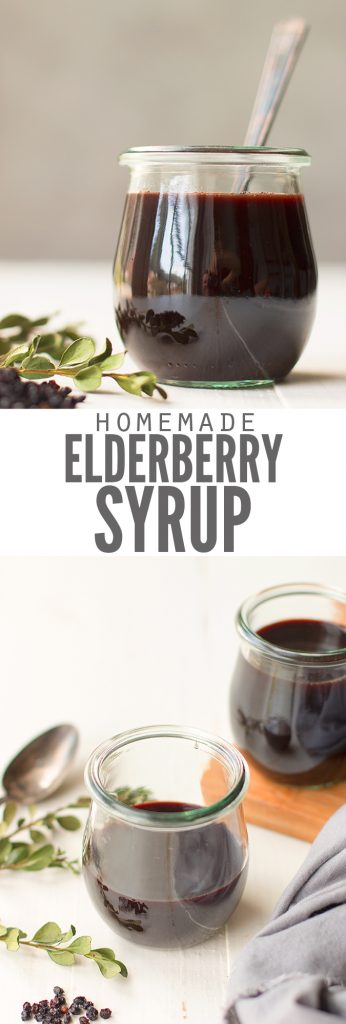
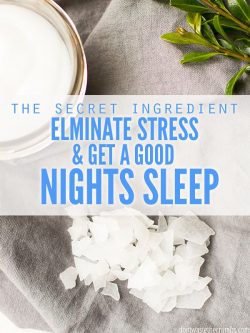
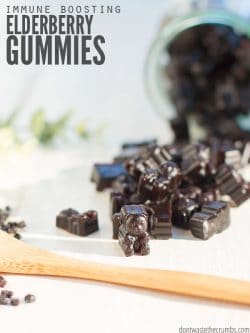
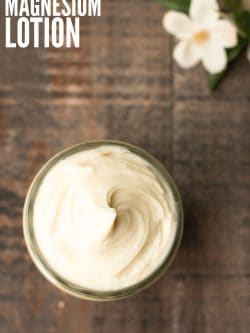
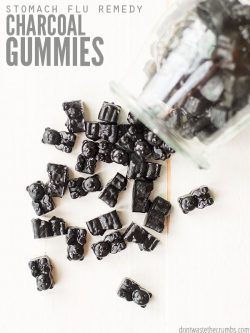
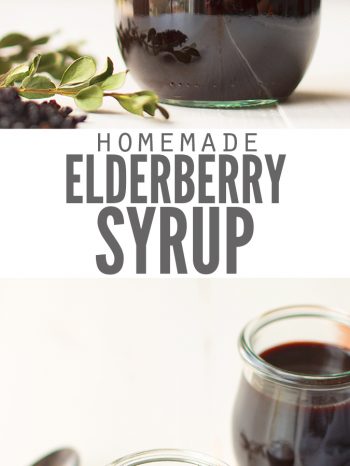
I accidentally added the honey while adding the other ingredients.
Will it thicken up as it cools?
Annette,
It should have been fine either way. How did it turn out?
Is it possible to can the elderberry syrup?
Hi Sue!
I have heard of other people canning elderberry syrup, but I do not have any experience with it directly. A google search could give you the instructions that you are looking for. Let us know how it goes! 🙂
If you are doubling the recipe do you boil/ simmer longer than an hour.
Yes, you should go for about an hour and 1/2 or until it looks as the post suggest.
Would you suggest taking this while 28 weeks pregnant?
Hi Tiffany,
Rather than popping the strained elderberries and spice into the compost do you think I could re-use it by making a tincture? Or would the healing compounds all be in the syrup after the boiling reduction?
Thanks so much.
Michelle
I bought a bag of berries from Walmart (Noelle was the brand) and it said to simmer one to two hours, the longer the better. Now I only have four ounces of liquid. What should I do with it, add water? How much honey? I’m just not sure how to proceed. Thank you!
Hi Renee! Were the bags dried, or fresh berries? If they were dried, you have very concentrated syrup. I’d simply serve less, and add honey to taste!
I accidentally put the honey in with everything else. Will this totally ruin the batch? Any way to save it?
You’ll be fine, Birdie. 🙂 Just taste at the end and adjust if needed!
Bridgeport wa?….that’s my hometown
How much liquid should I have when strained? I have two cups of syrup before adding the honey. Sound right?
Yes, that does!
I hastily read another recipe which said to soak the berries first, so I did that and then dumped the water instead of using as my liquid… did I throw away any significant nutrient do you think?? Kicking myself.
Did you soak? Or cook? If you soaked, there’s probably some nutrient loss, but it would be greater if you actually cooked them.
I make elderberry syrup and fire cider to combat colds, flues and and other nasties 😊
I’ve never made fire cider before, but that sounds good!
My kids hate this. They refuse to eat it. The raw honey I bought also, isn’t great. So I’m making a batch today with regular honey. But What can I do to make this better tasting for kids?? I know sugar is bad, but if it gets them to eat the gummy bear, is it then good??? I just don’t know what else to do. I can do a smoothie a few times a week, but they won’t eat a smoothie every day. Any advice would be greatly appreciated.
Hi Michelle! I don’t think adding sugar to the gummy bears to get them to eat it is good. Elderberry syrup boosts the immune system, while sugar causes inflammation… so they’re counter-intuitive. Raw honey has immune boosting properties, but stevia can be an option for sweetening. I know it’s hard, mom, but sometimes “medicine” doesn’t taste good and you just do what you have to do! (at least that’s what I teach my kids. ♥ )
I was just wondering if you have ever used clove and cinnamon essential oil instead.
Hi Judy! I haven’t, but I was VERY tempted to in my last batch! You could add ginger too, and you’d have all the bases covered!
I use one drop of Thyme EO to each batch of my Elderberry Tonic.
I have frozen Elderberries from last fall’s harvest. What quantity of frozen Elderberries for your recipes?
I haven’t tried using frozen berries, from fresh before Tamara, so I’m really not sure!